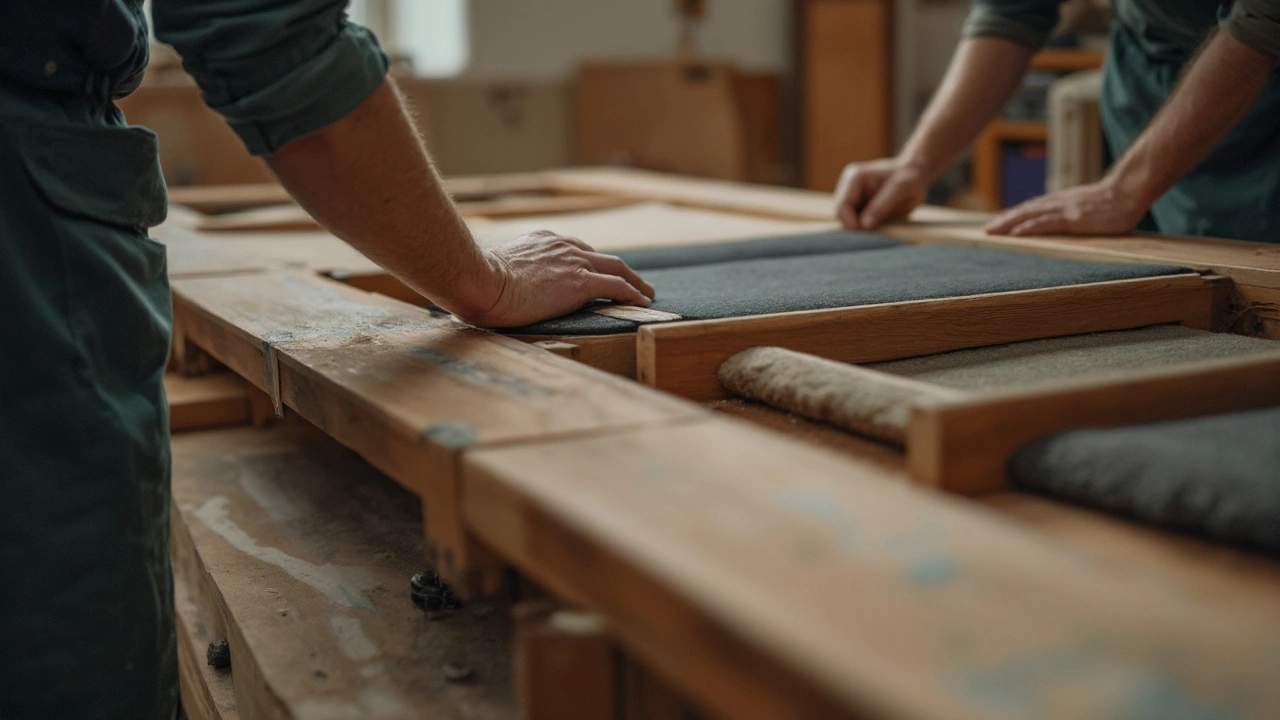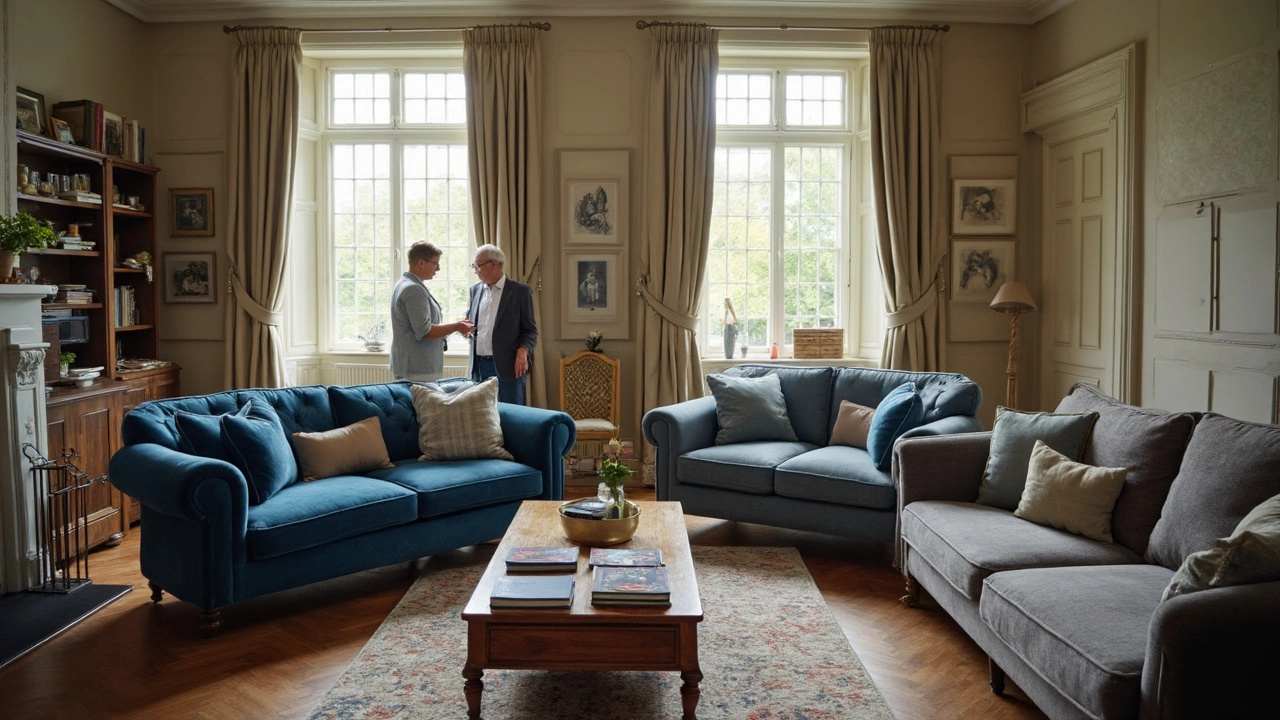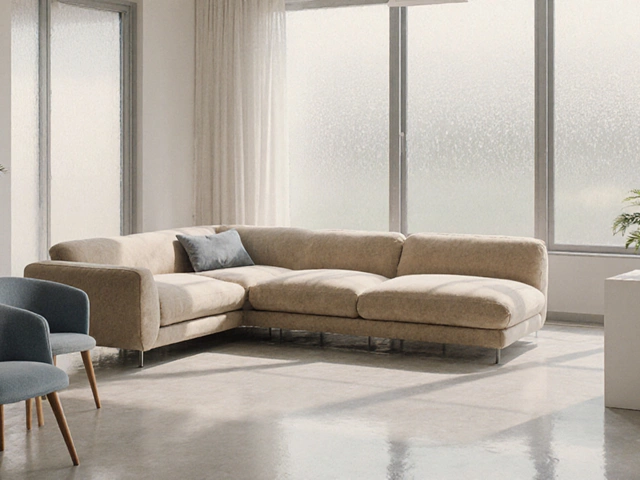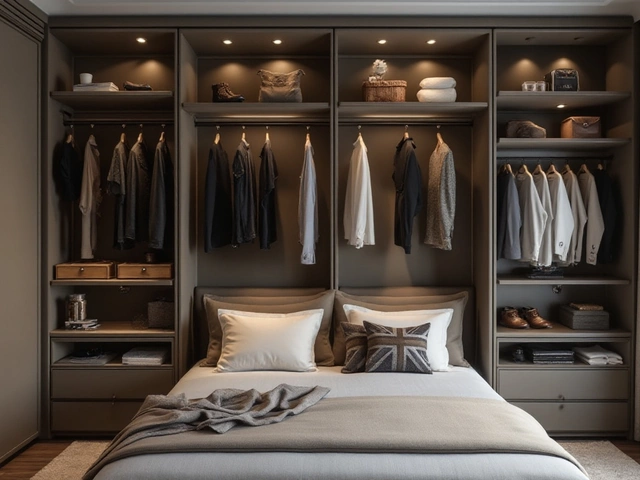Ever bought a fancy-looking sofa, only to watch it sag within a year? Happens all the time. Most people focus on how a sofa looks, but the stuff that decides whether it lasts is hidden inside—frame, foam, springs, and fabric. Some brands cut corners where you can’t see, which is why their “bargains” turn into regrets.
So, what actually separates a solid, comfy sofa from one that’ll have you hunting for a replacement faster than expected? It’s not just price or a brand logo. There are real differences in how couches are built and which materials they use. If you care about not wasting your money, you’ve got to get picky about what’s inside—not just the color or the shape.
- What Really Defines a Quality Sofa?
- Why Materials and Frame Construction Matter
- Top Sofa Brands: From Affordable to Luxury
- Spotting Red Flags in the Showroom and Online
- How to Choose: Tips for Finding Your Perfect Sofa
What Really Defines a Quality Sofa?
It’s easy to think a best sofa is just about looks, but if you dig deeper, quality is mostly about what you can't see. The real game-changers are the inside parts: think frames, cushions, and the way they're all put together. That’s where brands either make or break the deal.
Let’s keep it practical. A sofa’s frame is like the skeleton of a house. Top-tier brands use solid hardwood—stuff like oak, maple, or beech—because it’s super strong and doesn’t warp over time. Cheap brands cut costs with particleboard or thin plywood. Sure, it saves you bucks up front, but it leads to squeaks and frame cracks pretty fast.
Now for the sitting part, cushions matter way more than most folks realize. High quality sofa sets pack their cushions with high-density foam (look for at least 1.8lb density if you can find the info). Some higher-end brands layer the foam with down or wrap it in fiber to keep it comfy but not too squishy. Low-quality seating uses thin, lightweight foam that flattens pretty quick.
Suspension is the next big thing—this is what keeps your sofa from feeling like a hammock. The best quality sofas use what’s called “eight-way hand-tied springs.” It sounds fancy but just means the support gets tied by hand in a way that stops sagging and makes the couch last for years. Sinuous springs (aka S-shaped wire) are decent for mid-range, but avoid sofas with only webbing if you want the thing to survive long-term.
- Sofa brands care about upholstery too. Durable fabrics like polyester blends or high-grade leather can handle daily life, spills, and pets way better than thin linen or basic cotton.
- Joints matter—tight, screwed, and glued joints hold up far longer than plain nailed or stapled ones.
Want proof? A
| Foam Density | Expected Cushion Lifespan |
|---|---|
| Below 1.5 lb | 1-2 years |
| 1.8-2.2 lb | 3-5 years |
| 2.5 lb+ | 7 years or more |
Bottom line—if you want a quality sofa, don’t get distracted just by style or brand name. Dig into what’s under the cover and how it’s all held together. That’s where your money really works for you.
Why Materials and Frame Construction Matter
If you want a quality sofa, you can’t ignore the materials or how it’s put together. The most important part of any sofa set is what’s under the covers––the frame, springs, and cushion filling. Getting this right means your couch won’t fall apart, feel lumpy, or start squeaking every time you sit down.
A solid frame is the backbone of every best sofa. Hardwoods like oak, maple, and kiln-dried beech beat softwoods and particle board every time. Particle board might be cheap, but it bends and cracks fast—no contest. Look for joints that are screwed, dowelled, or double-dowelled and glued, not just stapled together. If you see metal brackets or corner blocks, that’s another good sign.
Springs are next up. Traditional eight-way hand-tied springs are the gold standard—they give nice, even support and don’t sag. Sinuous (or serpentine) springs are common in both luxury and mainstream sofas. They’re fine if there’s plenty of them and they’re made from thick gauge steel. But no-sag doesn’t mean no-comfort, and a cheap wire is going to squeak and lose bounce.
- Best sofas use hardwood frames and hand-tied springs.
- Look for high-resilience foam or a mix of foam and feathers in the cushions. Cheap foam flattens out fast.
- For upholstery, tightly-woven fabrics, top-grain leather, or performance materials (think kid/pet-friendly) last much longer.
- Removable seat covers make cleaning and replacing a breeze. Don’t skip this if you’ve got kids or pets.
If you’re curious how mainstream and luxury brands compare, check out this quick breakdown:
| Component | Mainstream Brand | Luxury Brand |
|---|---|---|
| Frame | Plywood or particle board | Solid kiln-dried hardwood |
| Springs | Sinuous (basic gauge) | Eight-way hand-tied |
| Cushion Fill | Low-density foam | High-resilience foam/feather blend |
| Upholstery | Polyester blend | Top-grain leather / Premium fabric |
The fancy stuff on the outside won’t matter if the inside is junk. Dig into the labels, ask questions in the store, and don’t feel silly flipping over a cushion or checking underneath. A strong foundation is what separates a good sofa brand from one that’ll leave you shopping again in a year.

Top Sofa Brands: From Affordable to Luxury
Walking into a store or scrolling online, you’ll see every brand promising the best sofas. Some actually deliver, but most are just good at flashy ads and sales pitches. Here’s the real lowdown on brands that nail quality across different budgets.
- IKEA: Say what you want, IKEA nails it for value. Their sofas won’t win style awards, but the frames are surprisingly sturdy for the price. Models like the EKTORP and VIMLE get solid reviews for comfort and easy cleaning. If you’re on a tight budget, this is the safest bet that doesn’t fall apart immediately.
- La-Z-Boy: Known for their recliners, but their sofa sets are just as tough. Frames use kiln-dried hardwood, which means less warping over the long haul. Prices don’t break the bank, and they offer real customization on cushions and fabrics.
- West Elm: If you’re after that modern look with legit build quality, West Elm’s got options. They mostly use FSC-certified wood, which is a plus for eco-minded shoppers. Their sofas hit the sweet spot of style and longer-lasting construction—but you’ll feel it in your wallet.
- Joybird: These guys are winning fans for custom, mid-century designs and a quick turnaround. Joybird backs their stuff with a lifetime frame warranty. Their outer fabrics are great for families and pets, especially their “pet-friendly” lines. Not super cheap, but way more durable than most.
- Burrow: For those who want online shopping with a manageable price tag, Burrow stands out. Modular setups ship in small boxes, making delivery a breeze. The frames are made from sturdy, sustainably sourced hardwood, and their stain-resistant fabrics are practical for kids and pets.
- Crate & Barrel: Here you’re paying for that reliable, middle-upper quality. Crate & Barrel doesn’t mess around with shortcuts in frame or cushion quality. Most models give you the option for performance fabrics—so you aren’t doomed if someone spills wine.
- Roche Bobois: This French brand is pure luxury. The price tags make your eyes water, but you’re getting showstopping design and truly hand-built frames. If you want to make your living room a statement and never worry about sagging, this is where you splurge.
“A well-built sofa shouldn’t just survive your family—it should adapt to your lifestyle for years,” says Jonathan Adler, designer and home lifestyle expert.
Take a look at how some of these brands hold up with real stats. Consumer Reports tested several and found that West Elm and Crate & Barrel consistently scored above average for frame strength and fabric durability, while budget picks like IKEA held their own for short-term use. Here’s a quick breakdown based on average durability and price range:
| Brand | Average Lifespan (years) | Starting Price (USD) |
|---|---|---|
| IKEA | 5-7 | $399 |
| La-Z-Boy | 7-10 | $799 |
| West Elm | 8-12 | $1299 |
| Joybird | 10-15 | $1200 |
| Roche Bobois | 15+ | $7000 |
These numbers aren’t just for show. They’re a good gut check when you compare what you actually get for your cash. If you want the best quality sofas, focus less on surface looks and more on brand reputation, frame materials, and warranty—because that’s what really lasts.
Spotting Red Flags in the Showroom and Online
Walk into a furniture store or browse a website, and every sofa looks amazing in those staged photos. But smart buyers know most issues hide beneath the surface. If you want a best quality sofa, don't just plop down and see if it feels comfy—do a quick check for the stuff that really matters.
Here’s what should get your alarm bells ringing, whether you’re testing sofas in-person or shopping online:
- Too lightweight: Give the armrest or back a shake. Quality sofa sets have hardwood frames, so they shouldn’t feel flimsy or easy to lift. If it wobbles or is super light, it’s probably made with cheap particleboard or plastic.
- Thin or saggy seat cushions: Press down firmly. Foam should bounce back. Saggy cushions right in the store mean it’ll get much worse at home. Look for high-resiliency (HR) foam or innerspring cores for the best support.
- Loose or uneven stitching: Bad sewing is a clear sign of rushing through production. Check seams and corners closely—a quality sofa will have strong, straight stitches with no threads poking out.
- Suspiciously low price: Sometimes you get what you pay for. If something looks too cheap, it probably skips key materials and shortcuts construction. Compare to mid-range brands for context.
- No warranty or vague policies: Reliable brands back best quality sofas with clear warranties—at least 3-5 years on the frame. A 1-year or shorter warranty is a red flag for cut corners.
- Online-only models with no reviews or info: If a retailer hides details about frame, cushion type, or fabric, that’s usually not a good sign. Transparent brands share exactly what’s inside.
Ever see a “no-returns” fine print? That’s not normal for reputable retailers. You want the option to return a sofa that arrives damaged, or just doesn’t match the description. Immediately bail if you see this.
Some quick numbers say a lot. A 2023 market survey found that sofas with kiln-dried hardwood frames last an average of 10-15 years, while most particleboard models make it less than 4 years. So, don’t let a low price override those hidden details—it just costs you more down the road.
| Feature | Quality Sofas | Cheap Sofas |
|---|---|---|
| Frame Material | Hardwood (oak, maple) | Particleboard/plastic |
| Cushion Fill | HR Foam/Springs | Low-density foam |
| Warranty | 3+ Years | 1 Year or none |
| Weight | Heavy/stable | Light/flimsy |
Want the real answer to who makes the best sofas? The ones who skip these shortcuts and are upfront about what’s inside. Use these checks before clicking ‘buy’—your future self will thank you every time you flop onto your couch after a long day.

How to Choose: Tips for Finding Your Perfect Sofa
Picking out the best sofas is a lot less about flashy looks and way more about daily comfort, durability, and the right fit for your lifestyle. Here’s how to avoid common mistakes and focus on the stuff that matters most.
- Test the frame: Don’t just sit. Stand up, wiggle the arms, and lift one corner of the sofa. If it feels wobbly or creaks, skip it. Good frames are made of kiln-dried hardwood, not particleboard or plastic.
- Check the suspension: High-quality sofas usually use a system called ‘eight-way hand-tied springs’. If a cushion feels bouncy but not too firm, it’s a good sign. Cheap sofas often use webbing or no-sag springs, which can wear out quicker.
- Feel the foam: The gold standard is high-density foam (at least 1.9 pounds per cubic foot for seats). If cushions feel too soft in the store, they’re going to sag even more at home.
- Ask about fabric: Got kids or pets? Consider easy-clean or stain-resistant fabrics like microfiber and certain polyester blends. If you want something that really holds up, leather is hard to beat for longevity, but it needs upkeep.
- Size really matters: Measure your space and entryways first. Sofas that don’t fit through the door are a nightmare. Always check width, depth, and height before you fall in love with any model.
- Brand isn’t everything, but it’s a clue: Brands like La-Z-Boy, Pottery Barn, and Joybird have transparent warranties and strong customer support. That’s usually a sign they believe in their product.
Want a quick rundown of what people care about most? Check out this data on what buyers said counts when shopping for a sofa set:
| Feature | What Buyers Care About Most (%) |
|---|---|
| Comfort | 42% |
| Durability | 28% |
| Style/Design | 16% |
| Price | 14% |
You really don’t have to spend a fortune to get a high-quality sofa. Just know what features matter, trust your touch and common sense, and always read the actual warranty details—not just the tags on the sales floor.



